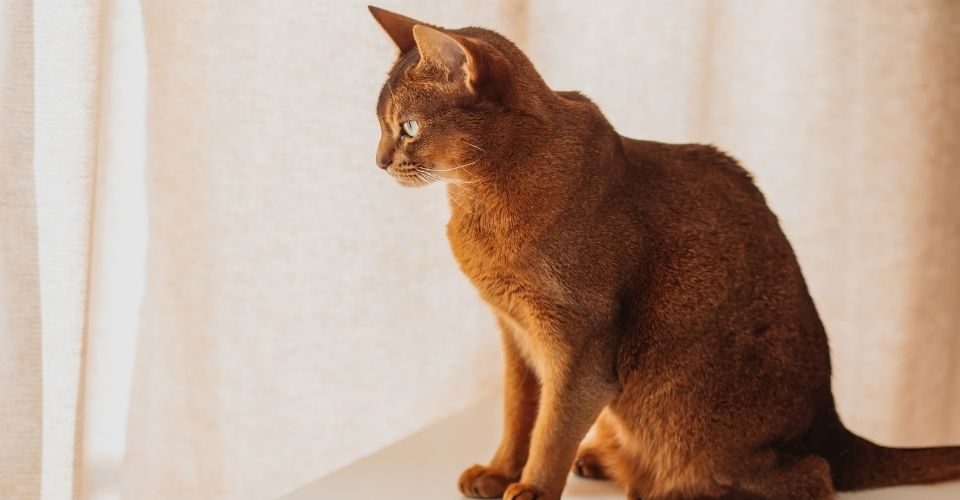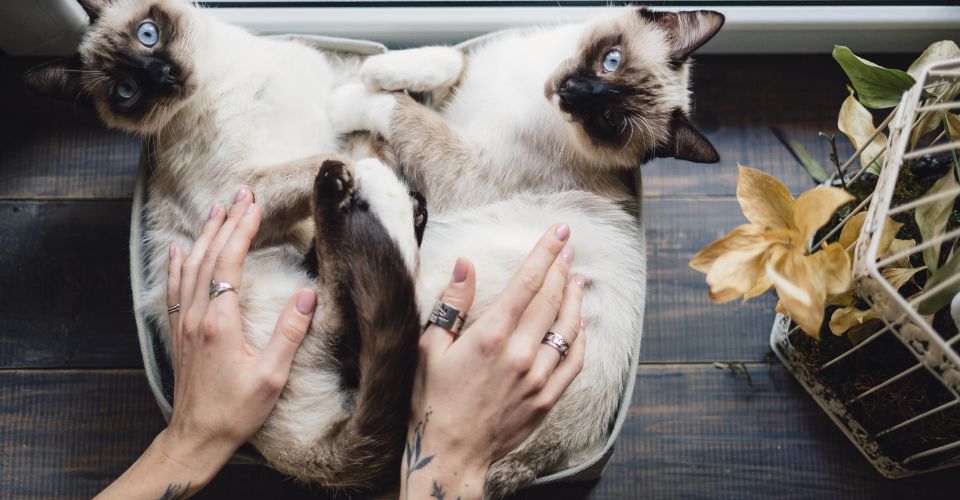Besides the marvelous Pyramids of Giza, mummification, and the longest river in the world, Egypt is also known for its domestication of animals, especially cats. If truth be told, these furry creatures were an important part of the ancient Egyptian civilization. Believing them to be magical, be it an ordinary kitty or the Egyptian cat goddess Bastet, cats had remained among the most revered beings there for centuries.
Today, it is widely believed that cats were first domesticated in ancient Egypt to regulate the rat population growing along with the growing Egyptian civilization. In fact, there is ample evidence to suggest that all domestic cats have descended from the Near Eastern Wildcat, also known as African Wildcat, that hails from the ancient Egyptian civilization.
Egyptian Cat Breeds
Despite the fundamental importance of Egypt in the development of domestic cats, today, there are only a handful of true Egyptian cat breeds. In this blog, we are going to briefly discuss the 8 cat breeds that originated in the ancient lands of Egypt.
Sand Cat
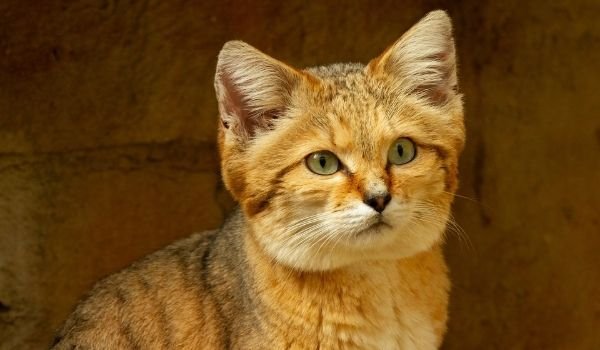
The Sand Cat Breed Overview
Size: 10 to 12 inches
Weight: 3 to 7.5 pounds
Lifespan: Around 13 years
Colors: Pale-sandy to gray-brown coat
Personality: Aggressive, tame, and stealthy
Discovered in 1858, the Sand Cat is a small cat breed found in the African and Asian deserts, including Egyptian desserts. Small Sand cats are tabby cats with a pale sandy to gray-brown coat and stripes on their legs. They also have the characteristic M of the tabby cats carved on their forehead and bold red streaks running from their eyes across their cheeks.
Mastering the life in no-man’s-land, these desert-dweller kitties can survive without drinking water for weeks, easily maneuver on huge dunes, and find their prey underground.
They have a small body with dense but soft fur on it. Though they look incredibly cute, Sand Cats are very ferocious hunters. Towards human beings, their demeanor is known to be very tame and fearless.
However, due to their wild nature and aggressiveness, they are not suitable to be kept as a pet.
Sand Cats Leave No Footprint Behind!
Sand Cats do not leave any footprints behind. They have fur on the underside of their paws to protect them from heat. Furred paws enable them to walk on sand without sinking their feet in the sand, making it hard for researchers and predators to trace them.
Chausie
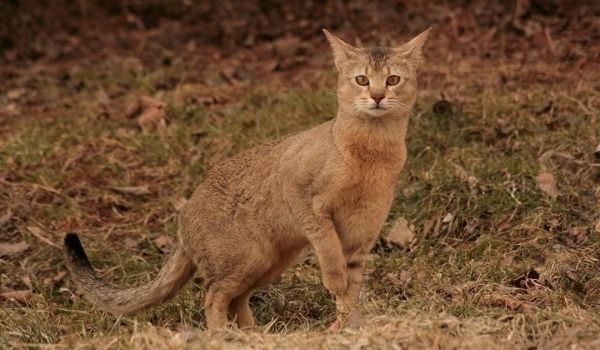
Chausie Cat Breed Overview
Size: 14 to 18 inches
Weight: 9 to 20 pounds
Lifespan: 15 to 20 years
Colors: Black and brown
Personality: Social, energetic, and adventurous
Large in size, the Chausie is a hybrid cat breed. These cats originated in the 1990s when breeders crossed domesticated cats with the Jungle Cat breed, a native of the mighty Nile region. Jungle cats were popular in ancient Egypt because of their hunting abilities and easygoing lifestyle. They were, in fact, adored to the point that they were mummified.
Due to wild roots, they have a slender body and elongated snout. Though they do not have a large or special variety of coat colors other than back and brown, they are unique when it comes to the grizzled pattern over their body.
The Chausie personality is characterized by high energy and attention-seeking. Nevertheless, they are very friendly and social. Additionally, Chausies are also known for their fascination with water—where other cats hate water, they would love to accompany you on pool days and enjoy their bathing sessions.
African Wildcat

The African Wildcat Breed Overview
Size: 14 to 16 inches
Weight: Six to 18 pounds
Lifespan: 11 to 19 years
Colors: Brown and gray
Personality: Content
The African Wildcat is one of the rare cat breeds. They are sporadically distributed in Africa, Asia, and Europe. Commonly, they have either ash-yellow or gray coats with dark stripes on them.
With their average size, African Wildcats seem to be domesticated at first glance, and one might think that these felines can make a great pet, but – make no mistake! – African Wildcats are not tame. In fact, preying on rodents make for more than 80% of their diet.
In general, they have a calm character while simultaneously being very independent and territorial.
Did You Know?
A study shows that all domestic cats have the same progenitor—the African Wildcat. This way, we can say that all pet cats have Egyptian ancestry.
Shirazi
Shirazi Cat Breed Overview
Size: 14 to 17 inches
Weight: 7 to 12 pounds
Lifespan: 10 to 17 years
Colors: Gold, silver, and smoke
Personality: Extremely friendly, smart, and energetic
The Shirazi cat is a cross between Egyptian Maus and Persian cats. Some legends state that these fluffballs are centuries old and their origin dates back to when Egypt was under Persian control. Today, they are commonly seen in the streets of Egypt.
Shirazi cats are adorable. These are fluffy cats with a muscular body and a longhair coat over it—mostly existing in either solid or various tabby patterns. Like Persian cats, Shirazis also has a flat face that makes them susceptible to respiratory issues. They have green or amber eye color, puffy cheeks, and a bushy tail, making them one of the cutest street cats.
They are often described as being the friendliest cat breed by their owners. Besides, they are much calmer than their Egyptian Mau parent. They love their owners and are always looking for their attention. You may often wake up to your cat lying on top of you or snuggling in bed with you.
Nile Valley Egyptian Cat

Nile Valley Egyptian Cat Breed Overview
Size: Medium-sized
Lifespan: 10 to 20 years
Colors: Black, brown, red, blue, gold, gray, and white
The Nile Valley Egyptian Cat is a medium-sized cat breed. Thousands of years old, these cats are considered to be the modern sub-form of Egyptian Maus. Despite their homeland being Egypt, Nile Valley Egyptian Cats are rare in Egypt and have come close to extinction.
To save the breed from going extinct, it was recognized by the International Cats Association in 2010 on an experimental basis, and efforts were made to save these furballs from going extinct.
Savannah
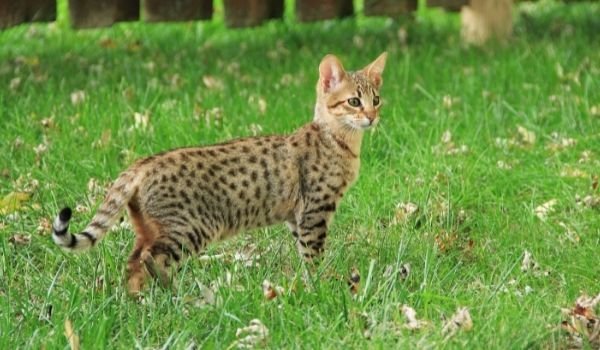
The Savannah Cat Breed Overview
Size: 14 to 17 inches
Weight: 12 to 25 pounds
Lifespan: 12 to 20 years
Colors: Black, brown, silver, and smoke
Personality: Smart, curious, and energetic
Reaching up to 17 inches in height, the Savannah cat is among the large Egyptian cat breeds. These felines are actually hybrid: they originated as a result of a cross between domestic cats and the Serval – a rare native wild cat breed in North Africa. Though first bred in the United States, Savannahs are listed as an Egyptian cat breed because of their Serval background.
These cats present somewhat exotic looks with spotted coats, tall figures, long necks, and thick tails. Savannahs are one of the most intelligent and curious cats of the feline world, they are always up for adventures and love to climb and perch in high places. To keep your Savanah cat content and happy, you should get her tall cat trees and window perches set up at high places.
If you are an outgoing person, Savannah cat would make a perfect choice for you. You can teach your cat how to walk on a leash and take her out for long walks and weekend hiking. You should also properly socialize your Savannah cat at a young age because improperly socialized Savannahs tend to be unwelcoming towards strangers.
Due to the low fertility rate, the Savannah bears the heftiest tag in Egyptian cat breeds price.
Did You Know?
Not considered to be domestic, Savannah cats are banned in certain places in the world.
Abyssinian
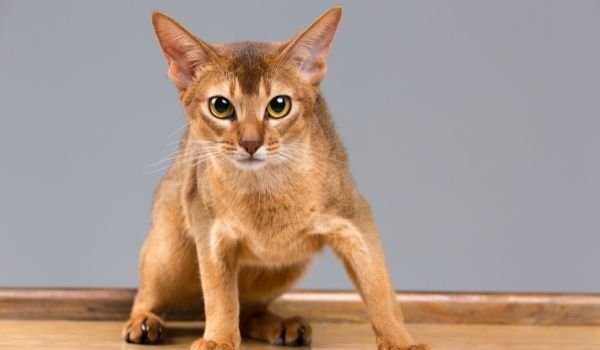
Abyssinian Cat Breed Overview
Size: 12 to 16 inches
Weight: 6 to 12 pounds
Lifespan: 9 to 15 years
Colors: Ruddy, red, blue, and fawn
Personality: Smart, curious, and affectionate
The Abyssinian is a millennia-old breed. The place of origin, however, is debatable as it is contested among Egypt, Ethiopia, and India. Today, Abyssinian is one of the most popular short-haired cat breeds, mainly because of the low-shedding tendencies, charms, and acrobatic antics these felines possess.
Their body is medium in length over which there is a coat of ticked pattern, presenting a cougar-like appearance. Other than this, they are also very easily recognizable due to their large ears, which are tilted forward a bit.
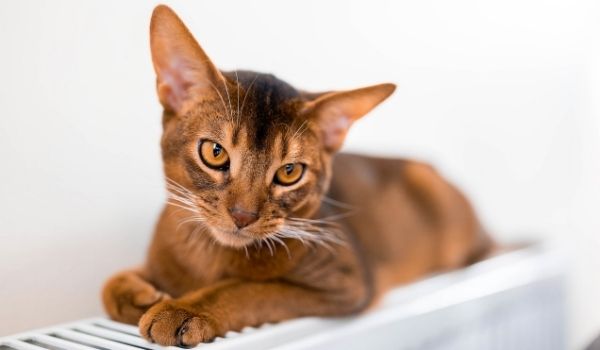
Their personality is described by their sociability, intelligence, and their tendency to keep the owners entertained. Due to their curious nature, high intelligence, and agility, no cupboard or room is inaccessible to them. So before bringing home an Abyssinian cat, make sure you have cat-proofed your home.
Did You Know?
The Abyssinian breed almost went extent twice: the first time right after the Second World War and the other time when it was hit by feline leukemia.
Egyptian Mau
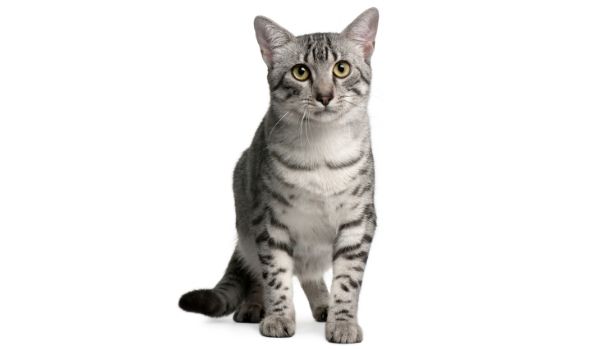
Egyptian Mau Cat Breed Overview
Size: 7 to 11 inches
Weight: 6 to 14 pounds
Lifespan: 18 to 20 years
Colors: Silver, bronze, black, or smoke
Personality: Energetic, affectionate, and smart
They are small to medium-sized cats. Originating about 4,000 years ago, the Egyptian Mau is thought to be the oldest domesticated cat breed in the world owing to the fact that these felines have been found mummified besides the pharaohs and that various ancient Egyptian arts depict them. Furthermore, due to their long lifespan, rarity, and wild-looking appearance, the Egyptian Mau price can go up to the U.S. $ 2,500.
Despite being friendly, they tend to develop a strong bond with one person in the family. Coming to the looks, they have a graceful appearance with a lustrous coat and slightly longer hind legs.
In legends, Egyptian Maus are associated with the inception of ‘M’ marking on tabby cats.
Did You Know?
The Egyptian Mau is among the fastest cat breeds. Having skinfold between flank and knees – a trait of Cheetah – these cats can run at up to 30 miles an hour.

